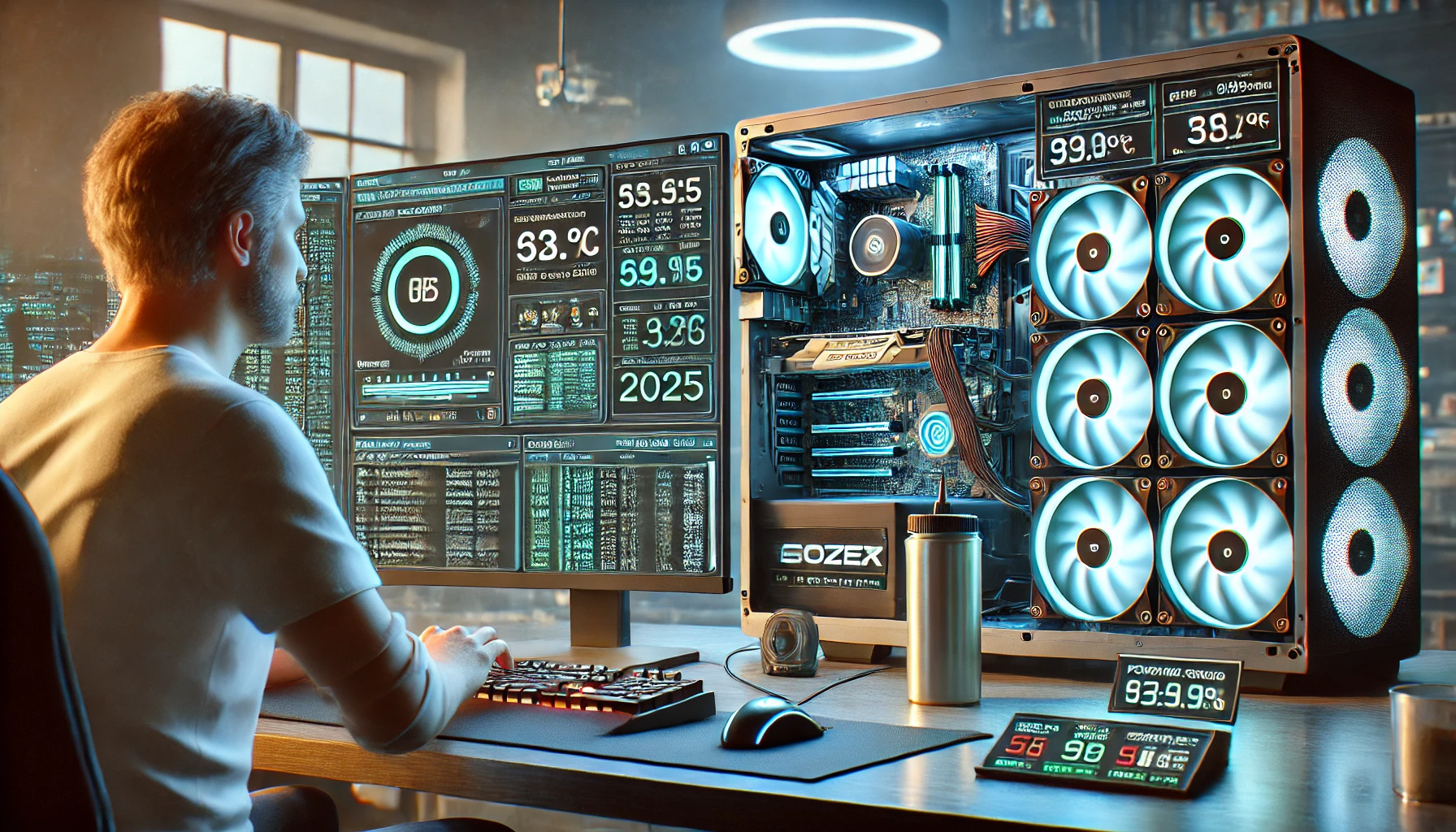If you’ve ever wanted more performance from your CPU or GPU without spending extra money, overclocking might be the answer. In 2025, overclocking is easier and safer than ever—thanks to better cooling, smarter BIOS tools, and improved chip efficiency.
But pushing your hardware beyond factory settings still comes with risks. Done incorrectly, overclocking can reduce system stability, cause overheating, or even shorten the lifespan of your components.
In this guide, you’ll learn exactly what overclocking is, how it works, the pros and cons, and how to do it safely and effectively in today’s PC environment.
What Is Overclocking?
Overclocking is the process of manually increasing the clock speed of a component—usually the CPU, GPU, or RAM—beyond its default specifications to gain more performance.
Most processors and GPUs are shipped with conservative speed limits to ensure stability across all systems. Overclocking lets you tap into unused potential and unlock more power for:
- Gaming (higher FPS)
- Video rendering and editing
- 3D modeling
- Heavy multitasking
💡 In modern PCs, CPUs and GPUs already boost themselves dynamically, but manual overclocking gives you control over performance and thermals.
What Can Be Overclocked?
In 2025, the following components can usually be overclocked:
1. CPU (Processor)
- Intel “K” series (e.g., i5-14600K, i7-14700K)
- AMD Ryzen processors (especially X and X3D models)
2. GPU (Graphics Card)
- NVIDIA and AMD cards through software like MSI Afterburner
- Useful for gamers and streamers
3. RAM (Memory)
- Overclocked through BIOS using XMP (Intel) or EXPO (AMD) profiles
- Manually tunable for latency and frequency
💡 Not all motherboards support overclocking. For CPUs, you’ll need a Z-series (Intel) or B/X-series (AMD) board.
Pros of Overclocking
- Increased performance without buying new parts
- Better value from high-end cooling systems
- Customization and control over system behavior
- Benchmarking fun for enthusiasts
For gamers and creatives, overclocking can mean smoother frame rates, faster render times, and snappier response.
Risks of Overclocking
While modern systems include protections, there are still risks:
- Heat: Higher speeds generate more heat, which can damage components over time
- System instability: Crashes, freezes, or failed boots if the settings aren’t stable
- Component wear: Overvolting can degrade silicon over time
- Warranty voids: Some manufacturers don’t cover overclocked components
💡 The key to safe overclocking is moderation, proper cooling, and careful testing.
Step-by-Step: How to Overclock a CPU Safely
Let’s walk through a safe CPU overclocking process.
Step 1: Know Your Hardware
- Check if your CPU is unlocked (Intel K-series or AMD Ryzen)
- Confirm your motherboard supports overclocking
- Ensure your cooler can handle extra heat (air or AIO recommended)
- Use a reliable PSU (avoid cheap power supplies)
Step 2: Monitor Before Overclocking
Install these tools:
- CPU-Z: Monitor clock speeds and voltage
- HWMonitor: Track temperatures
- Cinebench R23 or Prime95: Stress test your CPU
- OCCT or AIDA64: Additional system load tests
Record:
- Stock clock speeds
- Idle and load temperatures
- Power consumption and fan noise
💡 A good starting temperature is under 80°C under load before any overclocking.
Step 3: Enter BIOS (UEFI)
Restart your PC and press DEL or F2 to enter BIOS.
Look for these sections:
- AI Tweaker / Extreme Tweaker
- CPU Multiplier or CPU Ratio
- Voltage Control
Disable the following:
- Intel Turbo Boost (for manual control)
- SpeedStep or C-states (optional)
- Spread Spectrum (helps with stability testing)
Step 4: Increase CPU Multiplier
- Start small: increase the multiplier by +1
- If your base clock is 100MHz, setting the multiplier to 45 = 4.5GHz
- Save and reboot into Windows
Test stability with Cinebench or Prime95. Monitor temps.
Repeat until:
- Temps exceed 85–90°C under load
- System becomes unstable
- Crashes or freezes occur
💡 Most modern CPUs reach 4.8–5.2GHz safely with good cooling.
Step 5: Adjust Voltage (Carefully)
If the system crashes or fails to boot:
- Increase Vcore slightly (0.01V increments)
- Stay under 1.3–1.35V for long-term safety
- Use adaptive voltage if available (helps with idle power saving)
Test again. If stable, you’ve found your limit.
How to Overclock a GPU Safely
GPU overclocking is easier thanks to software tools like:
- MSI Afterburner (for NVIDIA and AMD cards)
- EVGA Precision X1
- AMD Adrenalin Software
Key values:
- Core Clock (MHz): Try +50 to +150MHz
- Memory Clock: Try +100 to +300MHz
- Power Limit: Increase to 110% if available
- Fan Curve: Custom curves keep temps in check
Test with:
- 3DMark
- Heaven Benchmark
- Games like Cyberpunk 2077 or Fortnite
💡 Watch for screen flickering, artifacts, or crashing—these are signs the GPU is unstable.
How to Overclock RAM
Easiest method: Enable XMP (Intel) or EXPO (AMD) in BIOS.
For manual tuning:
- Adjust memory frequency (e.g., 6000MHz to 6400MHz)
- Tweak timings (CL, tRCD, tRP, tRAS)
- Set voltage (1.35V–1.45V)
Use MemTest86 or Karhu RAM Test to ensure stability.
💡 RAM tuning is a deep field—use guides specific to your kit and platform for best results.
Tips for Safe Overclocking
- Always stress test after each change
- Don’t chase extreme numbers—stable performance is more valuable
- Watch temperatures during extended gaming or rendering sessions
- Keep airflow clean and dust-free inside your case
- Document your settings—BIOS resets can happen unexpectedly
- Use BIOS profiles to save stable configurations
Final Thoughts
Overclocking in 2025 is safer and more accessible than ever—but it still requires patience, knowledge, and responsibility. Whether you’re chasing high FPS, lower render times, or just enjoy the challenge, overclocking can breathe new life into your hardware.
Start slow, monitor carefully, and always prioritize system health over aggressive speeds. With the right approach, you’ll unlock your PC’s hidden potential without risk.
